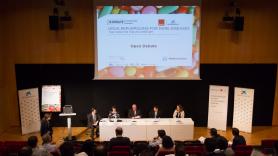Rare diseases each, by definition, affect only a handful of people. However, there are more than 7,000 different types and together they affect roughly 10% of the global population. Nevertheless, only 5% of all rare disease currently have some sort of treatment available.
There are many difficulties in researching therapies for rare diseases. Firstly, studies tend to focus on common diseases, which have a broader margin of action and larger profit margin. And, secondly, the studies are more complicated due to the scarcity of patients on which to test new drugs.
One strategy to improve this situation is called “drug repurposing”, or repositioning drugs already approved for other indications. The advantages are clear: cumulative knowledge about these drugs shortens timelines while also cutting down on the investment needed. Nevertheless, this strategy has its own hurdles and difficulties.
To discuss the new advances in drug repurposing for rare diseases, the problems and proposed solutions, several top international experts met on 17 and 18 November 2016 for the debate ‘Drug Repurposing for Rare Diseases. The Cure for the 21st Century’, organized by B·Debate –and initiative of Biocat and the “la Caixa” Foundation to promote scientific debate– with the Barcelona Science Park (PCB) and Hospital Sant Joan de Déu (HSJD).
CONCLUSIONS
- Over 90% of rare diseases have no treatment. In part, this is due to lack of interest but also because of the difficulty of doing research with so few patients.
- Drug repurposing, or repositioning drugs already approved to treat other diseases, cuts the investment and time needed for development.
- Networks seem to be key for pooling information and patients, which in the case of these diseases can be spread out and not interconnected.
- There are several examples of repurposed drugs and many are in the clinical trial phase. The final price of the new indication is a source of controversy, as it is often much higher than the original price.



